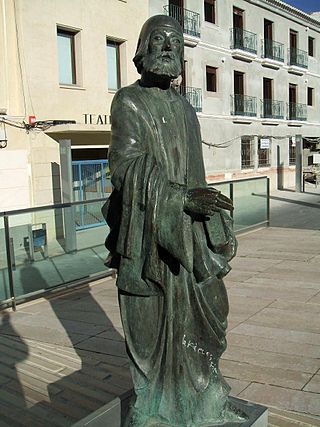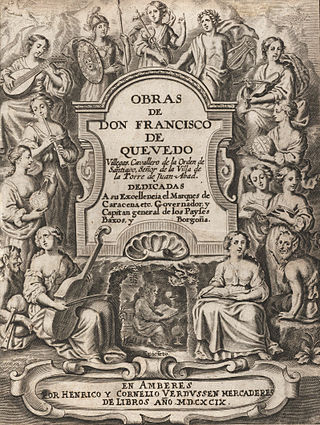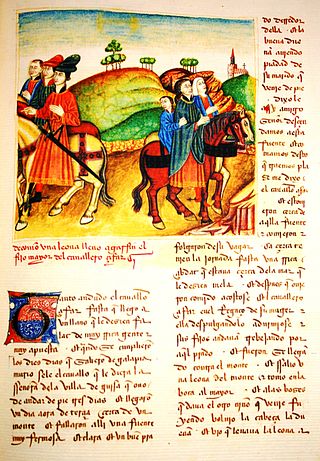
Miguel Hernández Gilabert was a 20th-century Spanish-language poet and playwright associated with the Generation of '27 and the Generation of '36 movements. Born and raised in a family of low resources, he was self-taught in what refers to literature, and struggled against an unfavourable environment to build up his intellectual education, such as a father who physically abused him for spending time with books instead of working, and who took him out of school as soon as he finished his primary education. At school, he became a friend of Ramón Sijé, a well-educated boy who lent and recommended books to Hernández, and whose death would inspire his most famous poem, Elegy.

Mexican literature is one of the most prolific and influential of Spanish-language literatures along with those of Spain and Argentina. Found among the names of its most important and internationally recognized literary figures are authors Octavio Paz, Alfonso Reyes, Carlos Fuentes, Sergio Pitol, José Emilio Pacheco, Rosario Castellanos, Fernando del Paso, Juan Rulfo, Amado Nervo, Sor Juana Inés de la Cruz, Ramón López Velarde, and Carlos de Sigüenza y Góngora, among others.

Spanish literature generally refers to literature written in the Spanish language within the territory that presently constitutes the Kingdom of Spain. Its development coincides and frequently intersects with that of other literary traditions from regions within the same territory, particularly Catalan literature, Galician intersects as well with Latin, Jewish, and Arabic literary traditions of the Iberian peninsula. The literature of Spanish America is an important branch of Spanish literature, with its own particular characteristics dating back to the earliest years of Spain’s conquest of the Americas.
Mester de juglaría is a Spanish literature genre from the 12th and 13th centuries, transmitted orally by "juglares" who made their living by reciting and singing these stories for the recreations of nobles, rulers, and the general public. These were people of humble origins, traveling comedians who also engaged in circus acts like juggling, tightrope walking, and acrobatics, or acted as clowns who told jokes or played simple instruments, or danced and sang versions of simple mime or puppet pieces, or, importantly, recited verses composed by other authors, called troubadours, either in public places, or in castles of feudal lords for whom they were housed; much of the time they also supported themselves by the visual arts.
Mester de Clerecía is a Spanish literature genre that can be understood as an opposition and surpassing of Mester de Juglaría. It was cultivated in the 13th century by Spanish learned poets, usually clerics.
The Generation of '27 was an influential group of poets that arose in Spanish literary circles between 1923 and 1927, essentially out of a shared desire to experience and work with avant-garde forms of art and poetry. Their first formal meeting took place in Seville in 1927 to mark the 300th anniversary of the death of the baroque poet Luis de Góngora. Writers and intellectuals paid homage at the Ateneo de Sevilla, which retrospectively became the foundational act of the movement.

Argentine literature, i.e. the set of literary works produced by writers who originated from Argentina, is one of the most prolific, relevant and influential in the whole Spanish speaking world, with renowned writers such as Jorge Luis Borges, Julio Cortázar, Leopoldo Lugones and Ernesto Sábato.

The Book of Good Love, considered to be one of the masterpieces of Spanish poetry, is a pseudo-biographical account of romantic adventures by Juan Ruiz, the Archpriest of Hita, the earliest version of which dates from 1330; the author completed it with revisions and expansions in 1343.

Juan Alfonso de Baena was a medieval Castilian poet and scribe in the court of Juan II of Castile. Baena, who was a converso, is best known for compiling and contributing to the Cancionero de Baena, an important medieval anthology composed between 1426 and 1465 containing the poems of over 55 Spanish poets who wrote during the reigns of Enrique II, Juan I, and Enrique III, and Juan II.
Manuel Altolaguirre was a Spanish poet, an editor, publisher, and printer of poetry, and a member of the Generation of '27.
Latin American poetry is the poetry written by Latin American authors. Latin American poetry is often written in Spanish, but is also composed in Portuguese, Mapuche, Nahuatl, Quechua, Mazatec, Zapotec, Ladino, English, and Spanglish. The unification of Indigenous and imperial cultures produced a unique and extraordinary body of literature in this region. Later with the introduction of African slaves to the new world, African traditions greatly influenced Latin American poetry. Many great works of poetry were written in the colonial and pre-colonial time periods, but it was in the 1960s that the world began to notice the poetry of Latin America. Through the modernismo movement, and the international success of Latin American authors, poetry from this region became increasingly influential.
Latino poetry is a branch of American poetry written by poets born or living in the United States who are of Latin American origin or descent and whose roots are tied to the Americas and their languages, cultures, and geography.
Cuban literature is the literature written in Cuba or outside the island by Cubans in Spanish language. It began to find its voice in the early 19th century. The major works published in Cuba during that time were of an abolitionist character. Notable writers of this genre include Gertrudis Gomez de Avellaneda and Cirilo Villaverde. Following the abolition of slavery in 1886, the focus of Cuban literature shifted. Dominant themes of independence and freedom were exemplified by José Martí, who led the modernista movement in Latin American literature. Writers such as the poet Nicolás Guillén focused on literature as social protest. Others, including Dulce María Loynaz, José Lezama Lima and Alejo Carpentier, dealt with more personal or universal issues. And a few more, such as Reinaldo Arenas and Guillermo Cabrera Infante, earned international recognition in the postrevolutionary era.

Spanish Baroque literature is the literature written in Spain during the Baroque, which occurred during the 17th century in which prose writers such as Baltasar Gracián and Francisco de Quevedo, playwrights such as Lope de Vega, Tirso de Molina, Calderón de la Barca and Juan Ruiz de Alarcón, or the poetic production of the aforementioned Francisco de Quevedo, Lope de Vega and Luis de Góngora reached their zenith. Spanish Baroque literature is a period of writing which begins approximately with the first works of Luis de Góngora and Lope de Vega, in the 1580s, and continues into the late 17th century.

Colombian literature, as an expression of the culture of Colombia, is heterogeneous due to the coexistence of Spanish, African and Native American heritages in an extremely diverse geography. Five distinct historical and cultural traditions can be identified, with their own socioeconomic history: the Caribbean coast, Greater Antioquia, the Cundinamarca-Boyacá Highlands, Greater Tolima and the Western Valley. Colombia produced one of the richest literatures of Latin America, as much for its abundance as for its variety and innovation during the 19th and 20th centuries. Colombian intellectuals who forged the literature of this period also contributed decisively to the consolidation of Latin American literature.

The Poema de Fernán González is a Castilian epic poem, specifically, a cantar de gesta of the Mester de Clerecía. Composed in a metre called the cuaderna vía, it narrates the deeds of the historical Count of Castile, Fernán González. It was written between 1250 and 1266 by a monk of San Pedro de Arlanza. In 1960 a fourteenth-century Arab roofing tile was discovered in Merindad de Sotoscueva north of Burgos that had some verses of the poem scrawled on it in Old Spanish. It is the oldest copy of the work.
Panamanian literature comprises the whole of literary works written in Panama. The first literature relating to Panama can be dated to 1535, with a modern literary movement appearing from the mid-19th century onwards

Aragonese literature of Spain includes Aragonese-language poetry, prose and novels.
Luis Rosales Camacho was a Spanish poet and essay writer member of the Generation of '36.

Medieval Spanish literature consists of the corpus of literary works written in Old Spanish between the beginning of the 13th and the end of the 15th century. Traditionally, the first and last works of this period are taken to be respectively the Cantar de mio Cid, an epic poem whose manuscript dates from 1207, and La Celestina (1499), a work commonly described as transitional between the Middle Ages and the Renaissance.











